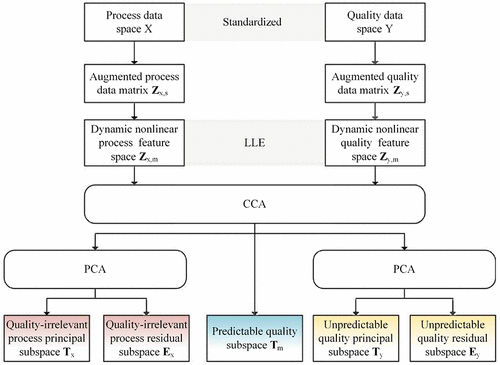当前位置:
X-MOL 学术
›
Ind. Eng. Chem. Res.
›
论文详情
Our official English website, www.x-mol.net, welcomes your feedback! (Note: you will need to create a separate account there.)
Novel Quality-Relevant Process Monitoring based on Dynamic Locally Linear Embedding Concurrent Canonical Correlation Analysis
Industrial & Engineering Chemistry Research ( IF 4.2 ) Pub Date : 2020-11-25 , DOI: 10.1021/acs.iecr.0c03492 Ping Wu 1 , Siwei Lou 1 , Xujie Zhang 1 , Jiajun He 1 , Jinfeng Gao 1
Industrial & Engineering Chemistry Research ( IF 4.2 ) Pub Date : 2020-11-25 , DOI: 10.1021/acs.iecr.0c03492 Ping Wu 1 , Siwei Lou 1 , Xujie Zhang 1 , Jiajun He 1 , Jinfeng Gao 1
Affiliation

|
Quality-relevant process monitoring has emerged as a powerful tool in ensuring product quality for industrial processes. However, most industrial processes exhibit dynamic and nonlinear characteristics. A novel quality-relevant monitoring named “dynamic locally linear embedding concurrent canonical correlation analysis” (DLCCCA) is proposed for nonlinear dynamic processes. First, local structure information on the time-lagged process and quality variables is extracted through locally linear embedding (LLE). Second, the extracted structure information is incorporated into canonical correlation analysis (CCA) through formulating a new optimization objective. Consequently, the process data space is decomposed into predictable quality subspace, quality-irrelevant process subspace, and unpredictable quality subspace. Third, the unpredictable quality subspace and quality-irrelevant process subspace are further decomposed using principal component analysis (PCA). From the decomposed subspaces, Hotelling’s T2 and Q statistics are established for quality-relevant process monitoring. Moreover, kernel density estimation (KDE) is utilized to determine the corresponding threshold for each statistic. DLCCCA combines the merits of both LLE and CCA. Two case studies are carried out to illustrate the superior performance of DLCCCA by comparison with other relevant methods.
中文翻译:

基于动态局部线性嵌入并行典型相关分析的质量相关过程监控
与质量相关的过程监控已成为确保工业过程产品质量的强大工具。但是,大多数工业过程都表现出动态和非线性特性。针对非线性动态过程,提出了一种与质量相关的新型监测方法,称为“动态局部线性嵌入并发规范相关分析”(DLCCCA)。首先,通过局部线性嵌入(LLE)提取有关时滞过程和质量变量的局部结构信息。其次,通过制定新的优化目标,将提取的结构信息纳入规范相关分析(CCA)。因此,过程数据空间被分解为可预测的质量子空间,与质量无关的过程子空间和不可预测的质量子空间。第三,使用主成分分析(PCA)进一步分解了不可预测的质量子空间和与质量无关的过程子空间。从分解的子空间中,Hotelling的建立T 2和Q统计信息以进行与质量相关的过程监控。此外,内核密度估计(KDE)用于确定每个统计信息的相应阈值。DLCCCA结合了LLE和CCA的优点。通过与其他相关方法进行比较,进行了两个案例研究,以说明DLCCCA的卓越性能。
更新日期:2020-12-09
中文翻译:

基于动态局部线性嵌入并行典型相关分析的质量相关过程监控
与质量相关的过程监控已成为确保工业过程产品质量的强大工具。但是,大多数工业过程都表现出动态和非线性特性。针对非线性动态过程,提出了一种与质量相关的新型监测方法,称为“动态局部线性嵌入并发规范相关分析”(DLCCCA)。首先,通过局部线性嵌入(LLE)提取有关时滞过程和质量变量的局部结构信息。其次,通过制定新的优化目标,将提取的结构信息纳入规范相关分析(CCA)。因此,过程数据空间被分解为可预测的质量子空间,与质量无关的过程子空间和不可预测的质量子空间。第三,使用主成分分析(PCA)进一步分解了不可预测的质量子空间和与质量无关的过程子空间。从分解的子空间中,Hotelling的建立T 2和Q统计信息以进行与质量相关的过程监控。此外,内核密度估计(KDE)用于确定每个统计信息的相应阈值。DLCCCA结合了LLE和CCA的优点。通过与其他相关方法进行比较,进行了两个案例研究,以说明DLCCCA的卓越性能。


























 京公网安备 11010802027423号
京公网安备 11010802027423号